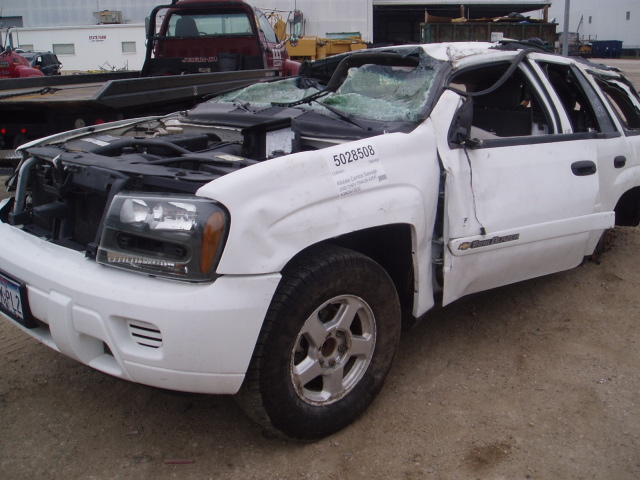Chevy TrailBlazer Roof Crush

In 1999, the Chevy Blazer was offered in a new trim package known as the TrailBlazer. This improved trim package was eventually promoted to a separate line of SUVs in 2002, officially launching the TrailBlazer as a mid-sized SUV offering. Based off of the original Blazer, which had been a staple of Chevy’s SUV line since 1983, the 2002 TrailBlazer was a five-seat SUV with options for either two-wheel drive or four-wheel drive.
The TrailBlazer was also offered in an extended version known as the EXT. This version included an additional row of seating, making the TrailBlazer a seven-seat SUV. However, this additional row of seating was accommodated with a heightened roof and longer profile. To compensate for this increase in height, the wheelbase on the vehicle was widened by several inches.
The TrailBlazer saw significant cosmetic changes in 2005, namely updating the front of the vehicle with a style more in line with the rest of Chevy’s cars and trucks. In 2006, a new offering was released under the Super Sport, or SS, designation. This package added a more powerful engine, improved brakes, and the option of all-wheel drive.
The TrailBlazer was discontinued with the 2009 model year. However, a 2012 model was revealed and the line was reinstated.
Roof Crush Risks in the TrailBlazer
Like the Blazer before it and many other mid-sized SUVs, the TrailBlazer comes with an increased risk of rollover and roof crush hazards. The high profile, which is not balanced by a wide enough wheelbase, raises the vehicle’s center of gravity. As a result, quick turns and side-impact crashes may cause these vehicles to rollover, potentially causing serious injuries.
These injuries can become even worse if the vehicle’s roof support beams fail during the rollover accident. While the vehicle rolls over, a collision against the roof may put considerable stress on the vehicle’s roof support beams. These beams, which keep the roof attached to the rest of the body normally, may prove incapable of keeping the full weight of the SUV from crumpling the roof into the cabin. Injuries from these incidents, known as roof crushes, often prove severe and can result in permanent damage to the head and neck.
NHTSA Rollover Safety Ratings for the TrailBlazer
Few manufacturers put significant safety features into a vehicle to prevent roof crushes from occurring, as the forces that cause these incidents are often simply too great to counteract. However, the root cause, the rollover accident, may be prevented through substantial rollover prevention methods.
To rate the overall rollover safety of the TrailBlazer, which may indicate how likely a roof crush incident may ultimately be, the federal government, through the National Highway Traffic Safety Administration, looks at a number of factors to generate a five-star rating system for rollover safety. The TrailBlazer shows comparable safety features as many other SUVs, which are a sizable liability in some cases.
The TrailBlazer rates only three stars out of five for the two-wheel drive model. The four-wheel drive model shows an improved four-star rating. However, the lack of a five-star rollover rating means that the possibility of a rollover accident, and a roof crush, is significant.
An injury from a Chevy TrailBlazer roof crush incident may leave you with financial burdens that are not easily managed. However, compensation may be available. For more information about this compensation and how we may be able to help you with your claim, contact the Willis Law Firm today at 800-883-9858.
